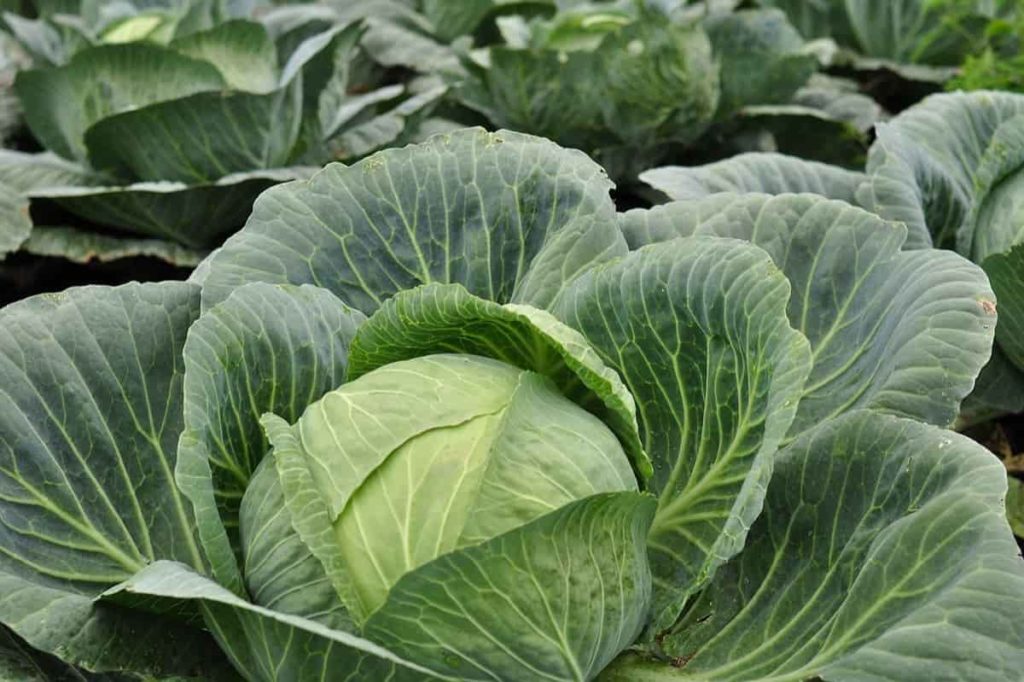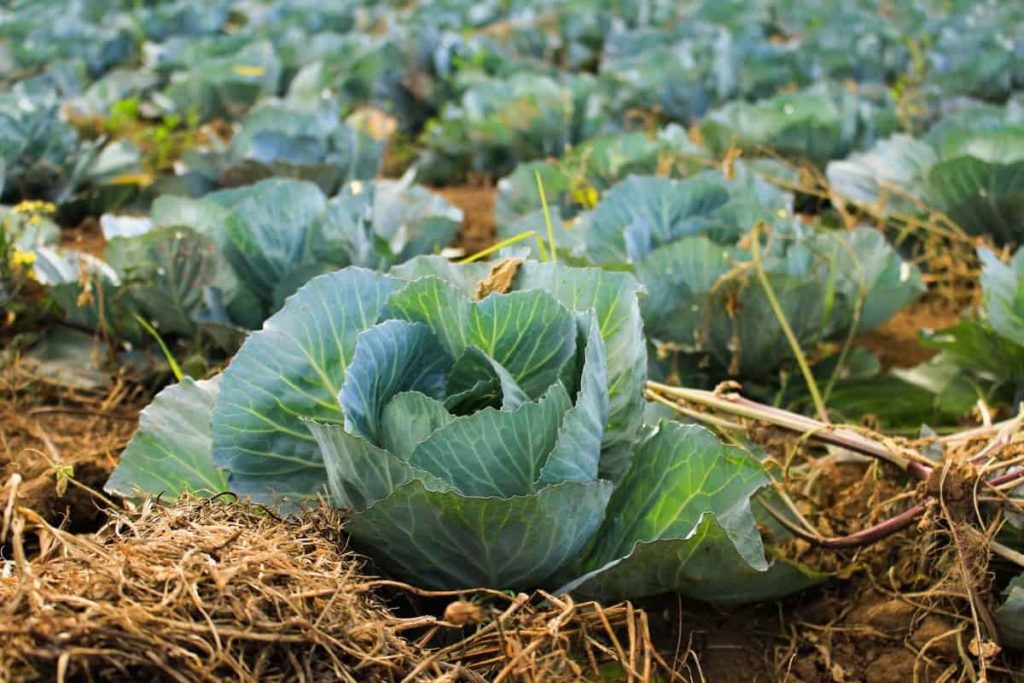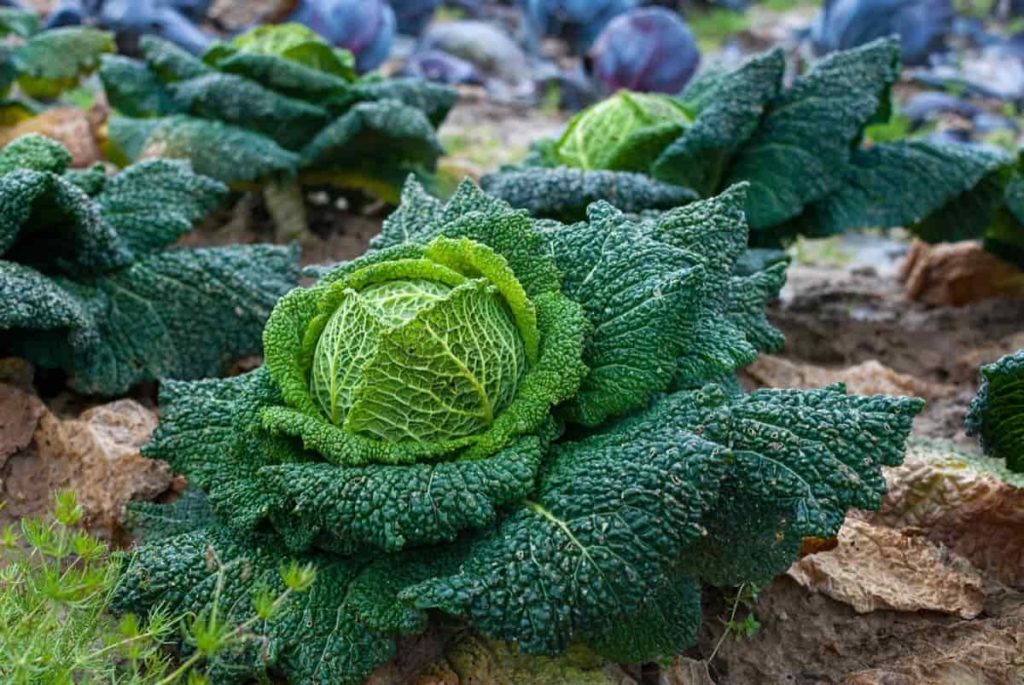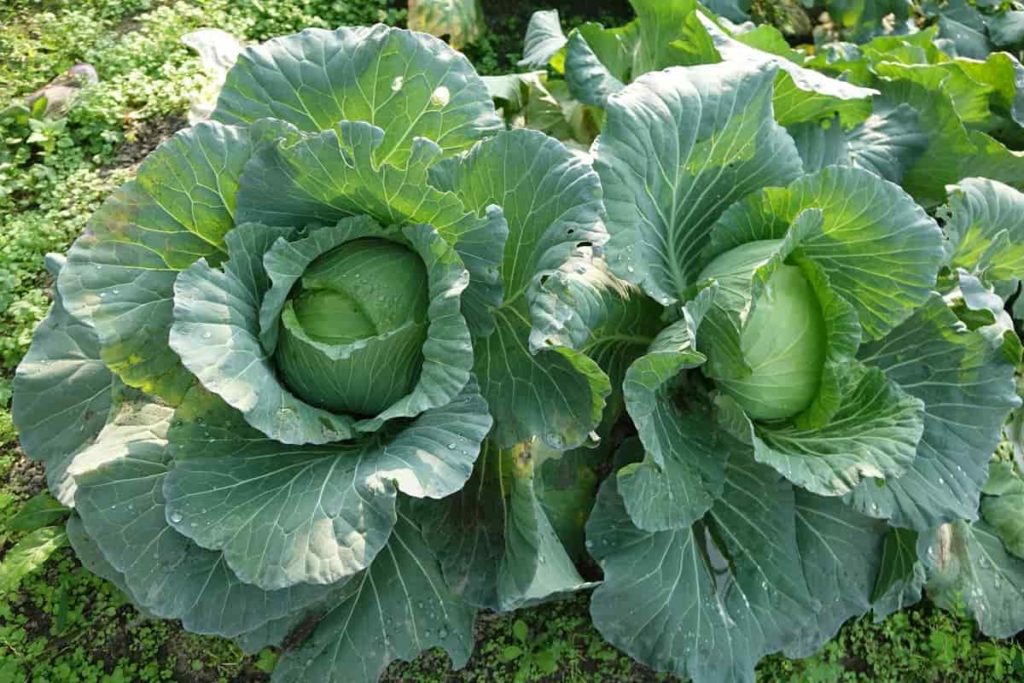Cabbage is a cool-weather vegetable suitable for both spring and fall. Cabbage is easy to grow but heavy feeders. They need an adequate amount of water and nutrients to produce large heads with healthy leaves. It is very important to fertilize your Cabbage to grow a successful crop. However, not all fertilizers are made the same they are made differently. The only common reason why the Cabbage crop does not reach the full production capacity is the lack of nitrogen. It also applies equally to the amount of how to preserve it and how to maintain its exact level. Let’s check out the best fertilizer for Cabbage.

The difference between the best fertilizers and average fertilizers is tough, you may find healthy crunchy Cabbage or bitter lifeless Cabbage. Adding fertilizer to your garden soil is the best way to enrich and provide the nutrients needed for your Cabbage plants. Fertilizers can be either organic or inorganic. Cabbage plants need fertilizers in the growing season. Apply fertilizers several days before sowing or planting. It is called basal dressing.
Mix the fertilizer with the soil above so that nutrients are available for young growing plants. Use fertilizer with high phosphorus content for root growth, protein, and chlorophyll formation. Side dressing keeps fertilizers on the side of the plant. The most important nutrient is nitrogen. Side dressing works better when the soil contains plenty of moisture. Topdressing sits when you apply fertilizer on the growing crop, and when plants need the most nutrients. Start when the Cabbage heads are strong.
Best fertilizer for Cabbage
Natural fertilizer for Cabbage
- It is possible to make homemade manure for Cabbage rather than buying commercial fertilizer. However, it may be more difficult to ensure that the plant is getting the nutrients it needs. Making organic fertilizer by brewing herbs and weed tea.
- Fill buckets with herbs and weeds and cover them with water and a net to keep the insects out. After a day in the sun, strain the plants and use a water solution to compost your plants. Some herbs include Borage, horsetail, and chickweed. For a high nitrogen fertilizer, consider herbs like chewing nettle and comfrey.
- Green manure
- horn manure
- Well rotten farmyard manure
- Biodynamic Compost
- vermicompost
- Neem cake
- Cow pat pit
In case you miss this: Cabbage Questions and Answers – Planting FAQs

Commercial fertilizer for Cabbage
You test the soil before planting Cabbage to determine the specific nutritional needs of your garden soil. However, if you are not able to test the soil, add 8-16-16 NPK fertilizer to the garden soil 2 weeks before transplanting the Cabbage seedlings. After transplant and when the roots are established, if you find out that your soil is deficient in nitrogen, you need to carefully side-dress your Cabbage plant with more nitrogen fertilizers. While excess nitrogen should be avoided in soil, composting your Cabbage plant with phosphorus-rich manure will stimulate the formation of roots and promote head growth.
How and when to fertilize Cabbage
Test the soil before adding manure to your garden soil. You can use test results to modify the soil and address the nutritional deficiency. Cabbage plants prefer a pH level of the soil is 6.0 to 6.5. It also requires adequate amounts of micronutrients like magnesium, calcium, zinc, and sulfur for excellent growth. Always follow the manufacturer’s instructions while adding fertilizers to your garden soil or Cabbage plant.
In case you miss this: Cabbage Growing Tips, Tricks, Ideas, and Secrets

Base fertilizers
Most importantly, you will need to add slow-release, pellets or granular fertilizer to the soil before planting your Cabbage. You can till the manure directly into your garden bed when you prepare the soil for spring plantation. Once your Cabbage plants are grown from two to four true leaves or about 6 inches tall, you can start feeding them with fertilizer.
- Base fertilizers are usually done in association with soil preparation. The base fertilizer of Cabbage is usually done within 15 days of planting time.
- Spray the soil with horn manure at the time of preparation of soil by dissolving it in 40 liters of water 75 grams per hectare.
- Well-rotten farmyard manure was applied at the time of soil preparation 50 tons per hectare.
- Application of Biodynamic Compost 5 tons per hectare at the time of soil preparation.
- 5 tons of vermicompost were applied at the time of soil preparation.
- 1250 kg neem-cake applied at the time of soil preparation
- Spray of cow pat pit After planting, 5 kg per hectare in 100 liters of water on 45th, 60th, and 75th days.
- Instead, do not apply pellets or granule fertilizers, apply a thin solution of balanced liquid (or water-solved) fertilizer instead and ensure that you carefully follow the manufacturer’s instructions on mixing fertilizer with water and spraying it around your Cabbage plants. Repeat the application of fertilizer after two- or three weeks using nitrogen-rich fertilizer, Cabbage needs nitrogen more in the early stages. However, avoid consumption of fertilizer with high levels of nitrogen, as this will encourage the growth of excess leaves and reduction in head formation.
- If you have planted Cabbage in sandy soil or there is a lot of rain that washes away soil nutrients, you may need to apply fertilizer more often. Make sure you’re not using a fertilizer that contains a weed killer, as it can damage Cabbage plants. At this stage of plant growth, we recommend that you avoid pellets or granular fertilizers because if they come in direct contact, they will burn your Cabbage plants.
Seedling fertilizer
Seedling fertilizer is done when the Cabbage is still in the seedling stage, primarily to promote seedling growth and increase the resistance of seedlings, to increase the survival rate of Cabbage seedlings after transplanting and planting. Fertilization at the seedling stage is usually done with fertilizer and urine or mixed with adequate amounts of urea for water, but it should be noted that the concentration of fertilizer at the seedling stage should not be high, and thin manure should be used primarily to avoid burning the seedlings.
In case you miss this: Growing Cabbage In Polyhouse – Greenhouse In India

Topdressing during development
Cabbage enters the growth period after planting and fertilization during growth is also very delicate. Growth fertilizer is primarily nitrogen fertilizer, which promotes the growth of Cabbage plants, inserts it into the rosette stage as soon as possible, and heads as quickly as possible, reducing the growth cycle of Cabbage, and improving the rate of nutrient change. However, during the growth of Cabbage, we also need to apply about 15 kg of phosphorate fertilizer properly which is still very helpful in improving the resistance of Cabbage.
Topdressing in the rosette stage
After entering the rosette stage of Cabbage we have to ensure the quality of the lotus plate and promote the growth of the lotus plate. It is still very beneficial for the Cabbage heading at a later stage. The top dressing in the rosette stage is urea, and the dose is about 20 kg. At this stage, however, we need to properly apply about 10 kg of potassium fertilizer that can promote the differentiation of flower buds and the formation of flower buds and bulbs.
Flower ball top dressing
The top dressing usually needs to be divided into three stages during Cabbage heading.
- Initial heading,
- Middle heading
- Late heading.
In case you miss this: Growing Hydroponic Cabbage, Planting, Care, Harvesting

In the early stages of Cabbage heading, each acre usually requires about 18 kg of urea, about 8 to 10 kg potash fertilizers, and about 3 kg of phosphate fertilizer. The top dressing of nitrogen fertilizer in the medium heading phase of Cabbage is 12 kg, potash fertilizer is 6 kg and phosphate fertilizer is 2 kg. In the middle and final stages of Cabbage, only proper foliar top dressing is usually required.
How to fertilize Cabbage in pots
Fertilizing Cabbage plants helps in increasing their growth rate. You can use any kind of organic fertilizer, including fish emulation, blood food, bone meal, nail food, rock dust, seaweed extract, alpha food, soybean food, and others. Fertilizers also encourage the formation of root hair, which helps in absorbing water and minerals from the earth. It promotes healthy roots and shoots. Use half the strength solution (half the amount suggested on the label).
In case you miss this: Growing Chinese Cabbage, Planting, Care, Harvesting

Avoid composting too close to the plant crown. Wait three days between applications. Monitor the pH level of the soil. If it falls below 6.0, add lime to increase the level of pH. If the temperature exceeds 30 °C do not give fertilizer. Avoid overfertilization. A very high amount of fertilizer will cause the leaves to yellow. Never use artificial fertilizers. They are toxic to plants. Add some fertilizer to the soil to improve drainage.
- Gardening Techniques in Planting Vegetables
- Where to Place Indoor Plants in Your Home
- How to Grow Tomatoes Organically at Home: A Comprehensive Guide
- Organic Gardening on a Budget: Low-Cost Methods and Materials
- Gongura Seed Germination and Planting Methods
- Cabbage Seed Germination and Selection
- Broccoli Seed Germination and Selection
- Asparagus Seed Germination and Variety Selection
- Seasonal Flower Gardening: Best Practices for Spring, Summer, Fall, and Winter
- How to Grow Hibiscus from Flower
- Plantation Ideas for Home Decoration: A Beginners Guide
- Flower Garden Designs and Layouts for Beginners
- Planting and Spacing Techniques in Papaya: A Beginner’s Guide
- Growing Gold: Essential Techniques for Planting Pineapples
- How to Make Kalanchoe Plant Bushy: Home Remedies and Solutions
- 11 Reasons Why Your Gardenia is Not Blooming: Home Remedies and Solutions
- Eco Elegance: The Guide to Designing a Drought-Tolerant Landscape
- Gardening on a Slope: Strategies for Hillside Landscaping
- Nourish and Flourish: Top Organic Mulches for Thriving House Plants
- Everything You Want to Know about Indian Mogra Flower: Discover Uses and Growing
- Green Thumb Success: Expert Tips for Cultivating Greenhouse Pumpkins All Year Round
- Maximize Growth & Flavor: The Ultimate Guide to Companion Planting in Herb Gardens
- How to Control Rhododendron Problems Naturally: Home Remedies and Organic Ways to Fix Them
- Natural Magic: The Remarkable Benefits of Cinnamon for Plants
- Best Steps to Revive Dying Tulip with Natural and Organic Treatment
- 10 Reasons Why Your Angel Trumpet is Not Blooming: Remedies and Treatment
- How to Fix Periwinkle Leaf and Flower-Related Problems: Natural Remedies and Solutions
- How to Fix Zinnias Leaf and Flower Problems: Discover Natural and Home Remedies
- Organic Steps to Induce Lemon Tree Flowers: A Comprehensive Guide
- Bloom Booster: Crafting the Perfect Homemade Bougainvillea Fertilizer
- Optimizing Growth: A Guide to Applying NPK Fertilizer for Potted Plants
- 10 Best Homemade Fertilizers for Rubber Plant: DIY Recipes and Application Method
- How to Boost Female Pumpkin Flowers: Effective Steps for More Flowers and High Yields
- Transform Your Indoor Garden: Top Benefits of Pink Salt for Houseplants
- 10 Best Homemade Fertilizers for Peacock Plants (Calathea): Easy DIY Guide
- Unlock Blooms: 9 Reasons Why Your Potted Chrysanthemum is Not Blooming